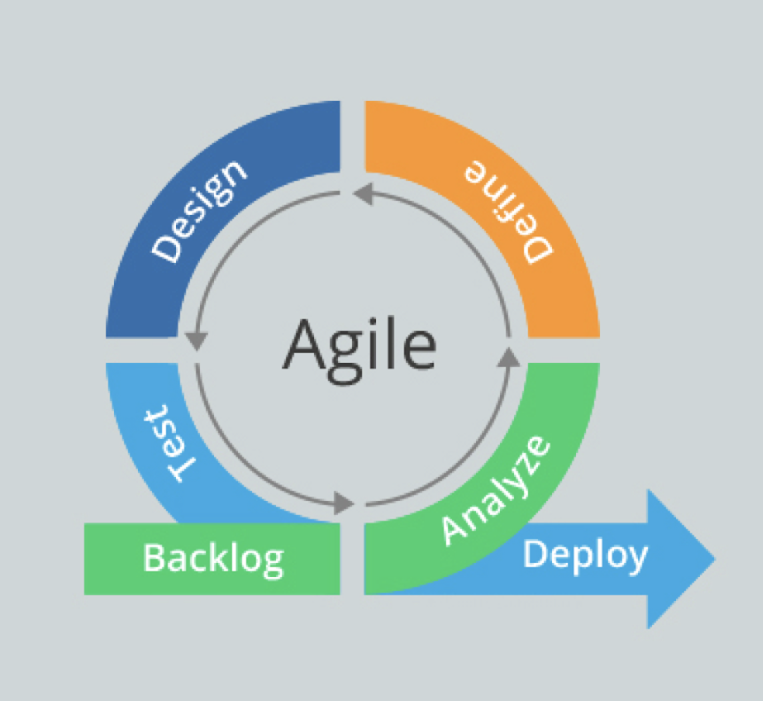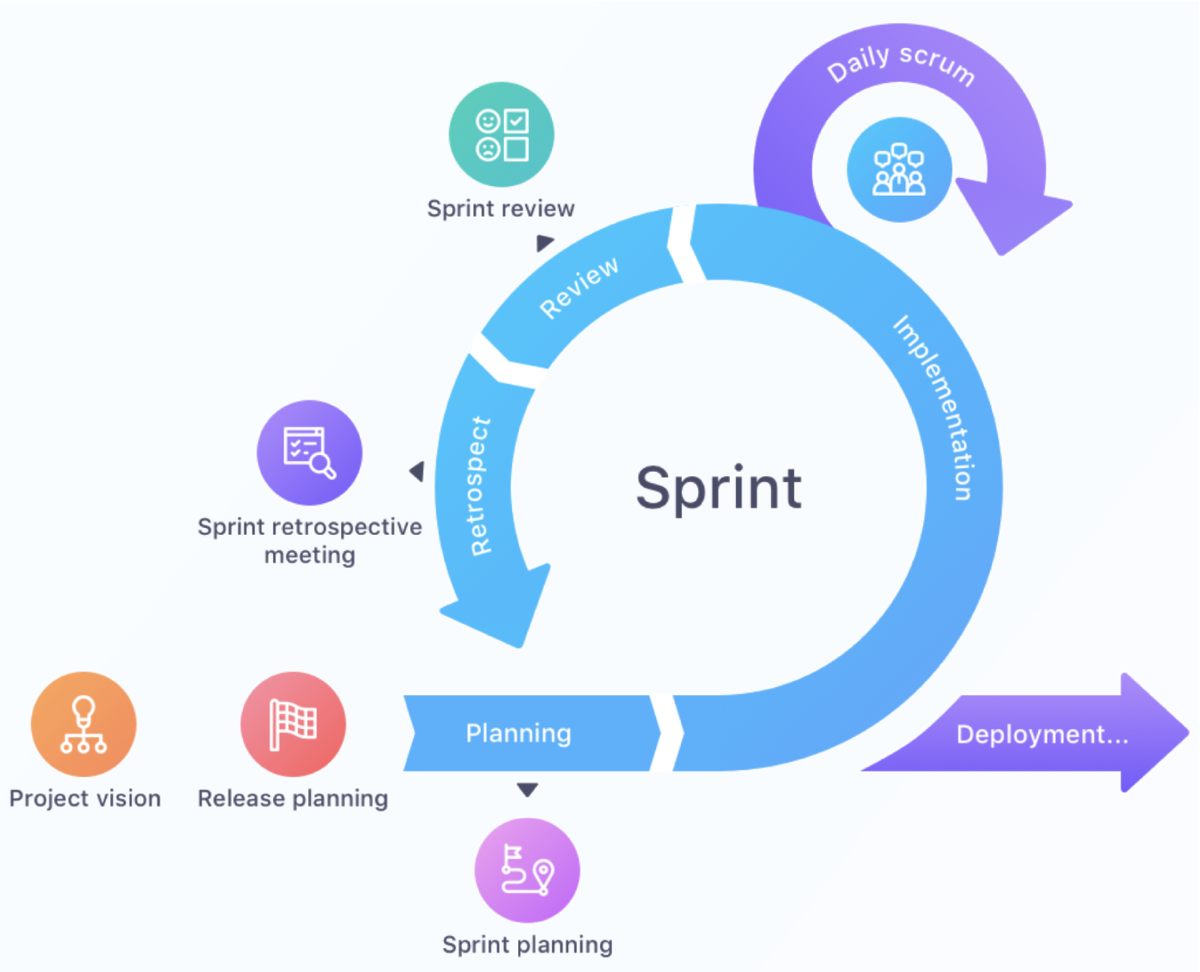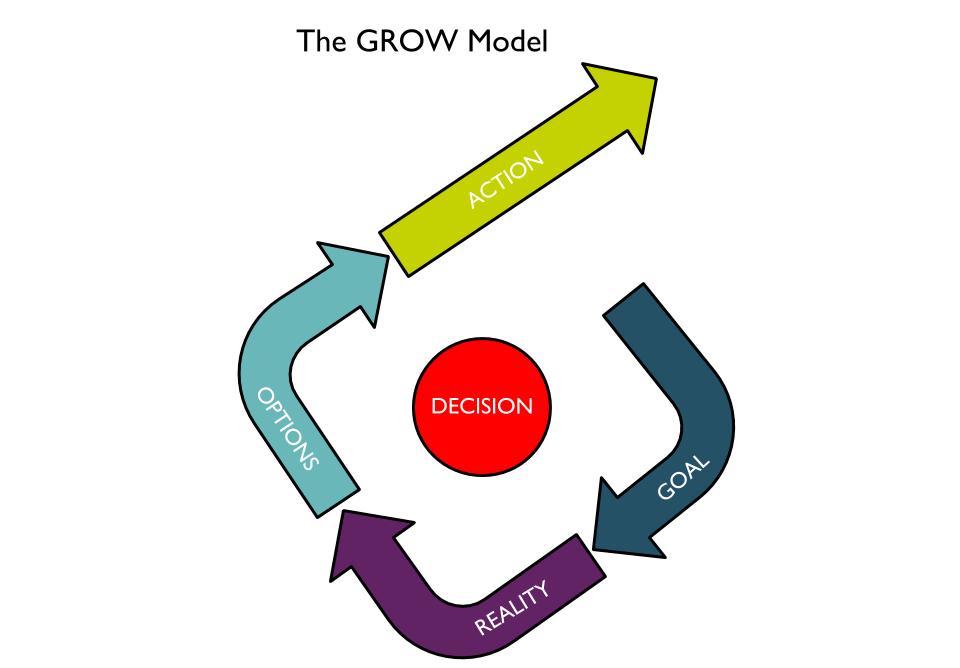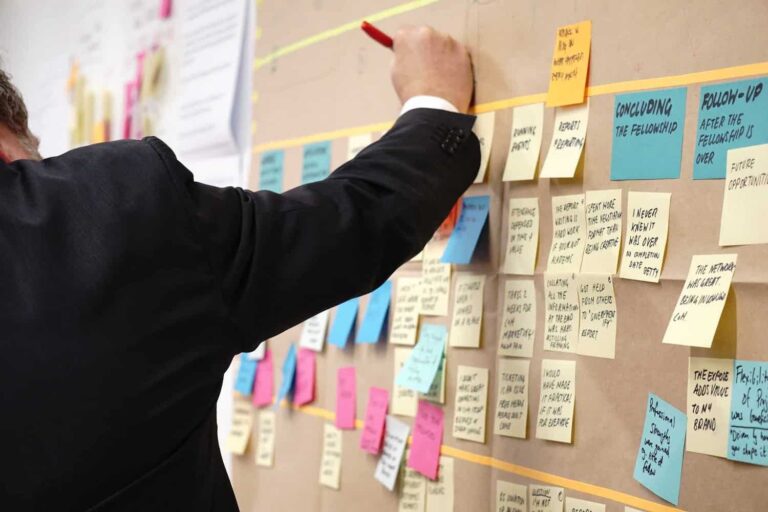With few companies successfully completing 100% of their projects, it’s important to run a project in the right way. Here’s some project management steps we recommend that’ll help you keep your project on track once it’s started.
-
- 1. Consider being Agile
-
- 2. Review and feedback on the go
-
- 3. Going off track? Use the GROW method
We go into these below:
1. Consider being Agile

In project managing part one we introduced a sequential and linear way of running projects – known as the Waterfall Method, and also RACI as a way of being clear on roles and responsibilities.
RACI and Waterfall are traditional ways of running a project. The Agile method is different.
In a traditional project, using the Waterfall Method the whole project is designed upfront in a lot of detail in the initiation document. There is a plan and it’s rolled out. Everyone does the plan. You build in contingencies.
Agile is a very different style of project management. Rather than having a plan that’s decided at the beginning, Agile is responsive to change. In this way the project trajectory is more flexible.
Agile has its origins in the software development world. Its principles were devised by a group of software developers on a skiing trip in 2001 who wanted to uncover a better way of developing software.
These principles can be applied to any project.

Agile involves creating a project team (the scrum) with a scrum master (usually a scrum member who is responsible for leading Agile principles and protecting the team from distractions). The work is designed in two-week circular sprints. Everything that needs to be done is prioritised within these two-week chunks. The sprint includes:
- Planning
- Implementation – with a daily scrum meeting
- Review
- Retrospective which feeds back into the next sprint
And instead of assigning tasks and roles, in each sprint, team members pick the jobs they’ll do and commit to getting them done. They can help each other out to get everything done by the end date.
Whilst tasks and jobs can’t be changed within the sprint, instead the team work on their tasks for two-weeks then review and create the next two-week plan.
Agile sprints are managed through a big project board (or KANBAN: japanese for signboard) that shows: To Do, Doing, Done.

images courtesy Kings College
Tasks and actions are added to the board and moved along as they progress.
The product owner (often the Project Manager, who is responsible for delivering the project) is responsible for the outcomes, priorities and sprint objectives in each two-week burst.
Team members self-organise. They take on tasks, own those tasks, and commit to completing them within the two weeks.
Because team members own their tasks, they are more engaged in completing them.
But this type of project management requires a lot of daily and honest feedback as a group – using these questions:
- What did you do yesterday?
- What are you doing today?
- Where are you stuck?
If you choose to use an Agile approach to project management you have to incorporate an element of continual review and feedback, so that the project can be managed as it’s going along, as things change.
2. Review and feedback on the go
Whether you choose Agile or a Waterfall/RACI approach, as your project proceeds it’s important to review what’s happening, feedback, and learn.
Borrowing from agile, it’s useful to have 3 stages to a feedback process:
i. Daily check-ins
Every day (or weekly), have a short team meet to discuss progress made, what each member’s current focus is, what are the blocks and what help is needed, and what are the risks or concerns.
ii. End of sprint or milestone review
After a 2-week sprint or a completed project milestone, have a review meeting where you focus on the outputs, discuss what progress has been made, review the issues and opportunities, and work out the next steps.
iii. Retrospective
Run a retrospective with your team every couple of weeks or at the end of a project milestone where you focus on how you are working, look at what you did well, what you could have done better and brainstorm some actions to improve problem areas. The aim is how to improve rather than apportioning blame. All should attend including the product owner.
Using a structured review process like this enables you to iterate: you do something, you learn from it, you change it, you do it again, you learn something new, you change it.
Instead of everything growing along in a steady line and then being finished, the team learns from these feedback loops as they go.
Part of continually improving a project and the way you work on it is to reflect on these things on a regular basis. On your own or as a group.
For example, anybody who wants to become good at something can’t just do stuff over and over again, you have to do something and then reflect on what happened in order to learn and get better at it.
So as a deliberate project management practice, ask these questions after each period of activity:
- What was good?
- What could be better?
- What did you learn?
- What questions do you have?
If you do this reflection regularly with intention, looking for the gaps in the team’s knowledge and performance, your team will get better and better at their project work, and you’ll continually improve the output.
Otherwise you’re all just doing tasks and you won’t know why you get the results you do.
Asking these questions – what’s working well, what could be better – in a project context helps you make sure you know where you are, and if it’s not going the way you thought it was, you can course correct.
How to get the most out of project meetings
Meetings are a crucial part of implementing a project and also of this feedback process, but most teams find meetings take too long, are unproductive and can bring their energy down.
It’s important that when you have project meetings you cover the right things, empower people, get clarity on where stuff is at, and get the outcomes you need to keep the project moving forward.
In order for meetings to be effective they need careful planning and structuring, and the right people need to be there.
There’s a really great alt meeting format that can help you achieve this:
LOMO is a way of re-organising meetings so that they’re high trust, self-organising, radically honest interactions. LOMO uses templates and canvases to make meetings safe and to help access a fast, agile, self-responsible culture.
LOMO is designed to give:
- Total clarity about outcomes of meeting.
- Power given to the data, including each person’s unique insight.
- Easy, logical techniques that make information sharing and decision making up to 5 times faster.
- Low preparation and no post-write up.
- Each person’s true insight is skillfully sought – so risks are exposed sooner.
Here’s a link to the LOMO Meetings Toolkit.
3. Going off track? Use the GROW method to solve problems

Once you start a project, things inevitably change. If things go off kilter, you hit a bump in the road, something didn’t happen in the way you expected or it’s all behind schedule, you need to review what’s going on and review your project management options.
A way to solve the problems that come up is to use the GROW method.
Originally designed as a coaching tool, GROW is an acronym for the four stages in problem solving:
- G – (Goal) Always start with your goal and what you want to achieve, then decide what ‘solved’ looks like.
- R – (Reality) Next explore the reality of the project. Where is it now and what is actually going on?
- O – (Options) Then brainstorm options to solve the problem, ie what could be done now. Select the best options and…
- W – (What Will you do) Decide what to do and create an action plan.
The first step – the goal you want to achieve – is crucial. It is important to clearly identify the aim, define the mission and understand what success looks like.
As an example, if your aim (goal) is to travel and do something different, but you’re not quite sure where or what, success is a decision of where to go. The next step is to determine where in reality you are at now: what’s going on? How much money do you have? What about the children? What about your current home? Usually when talking about the reality you start to come up with some options of what you could do: you could go off in a campervan, you could go to India, you could move to Spain… these are your options. The last stage is to choose what you will do and work out the next steps to make it happen.
As we said at the start few companies complete projects 100% successfully, but by following these guidelines, you’ve got more chance of that happening.
Using these tools will help you stay on track and course correct to successful completion.
In our next blog on this topic: we take a look at what to do when the project is finished.
If you’re struggling with projects and need some help with them, get in touch. At Then Somehow, we have tools and programmes that can help. Get in touch here.
